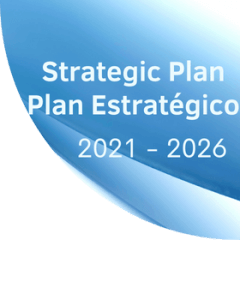Strategic Plan
- Written by: Tatiana Tejada
In November 1986, the first Strategic Planning working group was established. Subsequently, the organization’s“First Strategic Plan” was approved by the CIAT members at the General Assembly held in Brasilia, in April 1988 and then updated in 1989 in Quito, Ecuador
Strategic planning is being used by CIAT as tool for guiding the course and action to be followed for fulfilling its mission. All the countries participate therein, by contributing their ideas and experiences and expressing their concerns in relation to the ever more complex task which CIAT must carry out as an institution in the field of taxation.
The 2021 - 2026 Strategic Plan is being executed since July 1st, 2021. It was approved by the Executive Council at the 55th General Assembly held in Guatemala City, Guatemala, on June 21 to 24, 2021.
Strategic Guidelines and Initiatives
 Carry out cooperative actions that strengthen tax administrations through the exchange of experiences and good practices, in order to facilitate and promote voluntary compliance, combat fraud, tax evasion and avoidance
Carry out cooperative actions that strengthen tax administrations through the exchange of experiences and good practices, in order to facilitate and promote voluntary compliance, combat fraud, tax evasion and avoidance
 Develop and disseminate information, studies, research, innovative practices, and other products to improve tax policy and tax administration.
Develop and disseminate information, studies, research, innovative practices, and other products to improve tax policy and tax administration.
 Design, promote and carry out training and human talent development activities in coordination with the tax administrations.
Design, promote and carry out training and human talent development activities in coordination with the tax administrations.
 Design, promote and execute training and human talent development activities in coordination with tax administrations.
Design, promote and execute training and human talent development activities in coordination with tax administrations.
 Develop internal management and external coordination policies for the institutional strengthening of CIAT.
Develop internal management and external coordination policies for the institutional strengthening of CIAT.
Operating Program
The CIAT Executive Secretariat’s Annual Operational Plan is aligned with the Strategic Plan developed according to the Planning exercise carried out by the officials, with contributions and suggestions from the member countries from all the regions.
This plan includes the financial projection, with budgetary items for each of the Executive Secretariat’s programs, activities, projects and subprojects. It also included operational, tactical and strategic indicators.
For the planning process and its subsequent follow-up the Executive Secretariat developed an information system which allows for accumulating the activities up to the consolidation of strategic and tactical scoreboards and the generation of inputs for the budgetary items and shares in the accounting system. In addition reporting and follow-up systems have been developed which are related to the planning tools.


